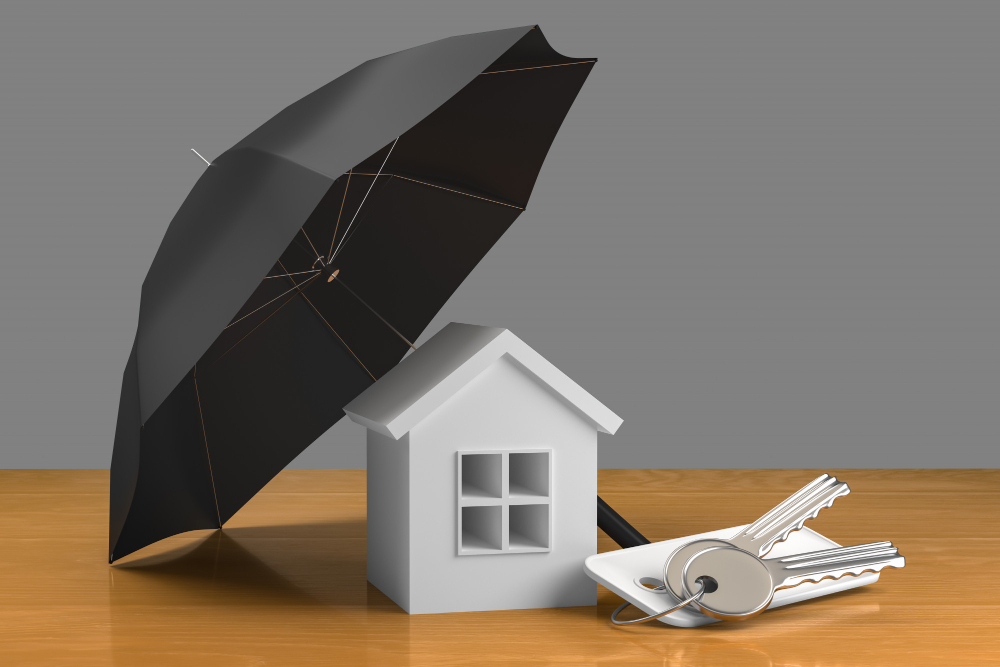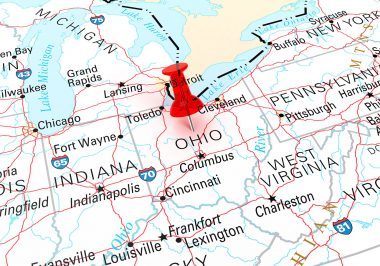What is a Good Mortgage Interest Rate in 2025?
Updated Wed, Nov 12, 2025 - 31 min read
Top blog articles
Securing a favorable mortgage interest rate is one of the most critical factors in your home buying journey. With rates currently averaging around 6.3% for a 30-year fixed mortgage, understanding what makes a rate “good” can save you tens of thousands of dollars over the life of your loan. This comprehensive guide explains current market conditions, what affects your rate, and how to secure the best possible deal for your home purchase or refinance.
In this guide, you’ll learn:
- Current mortgage rate benchmarks for 2025
- Whether specific rates like 4.75%, 5%, or 6% are competitive
- Key factors that determine your interest rate
- Proven strategies to qualify for lower rates
- When to lock in your rate versus waiting
Current Mortgage Rate Landscape 2025
As of October 2025, mortgage interest rates have stabilized in a more favorable range compared to earlier in the year. Understanding the current market helps you evaluate whether a quoted rate is competitive.
October 2025 Average Rates
30-Year Fixed Mortgage: 6.3% to 6.34% 15-Year Fixed Mortgage: 5.53% to 5.58% 5/1 Adjustable-Rate Mortgage (ARM): Varies by lender
According to data from Freddie Mac and major financial institutions, rates have settled at their lowest levels in approximately one year. This represents a significant improvement from the 7%+ rates seen earlier in 2025.
Recent Rate Trends
Mortgage rates experienced considerable fluctuation in recent years:
- 2020-2021: Historic lows below 3%
- 2023: Climbed to 23-year highs near 7.79%
- 2024: Ranged between 6.08% and 7.22%
- 2025: Currently fluctuating between 6.26% and 6.34%
Expert Forecasts for Late 2025 and Beyond
Leading housing finance authorities project gradual rate decreases:
- Fannie Mae: Expects rates to end 2025 at 6.4% and drop to 5.9% by end of 2026
- Wells Fargo: Projects Q4 2025 average of 6.3%
- National Association of Realtors: Forecasts 6.7% for Q4 2025
The Federal Reserve’s monetary policy continues to influence rate trajectories, with additional rate cuts anticipated as economic conditions evolve.
Key Takeaway: Current rates in the low 6% range represent good value compared to 2023-2024 highs, though they remain above the historic lows of 2020-2021.
Is 6% a Good Mortgage Rate?
A 6% mortgage interest rate is moderate to favorable in today’s market, depending on your personal circumstances and the broader economic context.
Historical Perspective
Mortgage rates have varied dramatically over the decades:
- Early 1980s: Rates exceeded 15% during high inflation
- 1990s-2000s: Typically ranged from 6% to 8%
- 2010-2020: Gradually declined to historic lows
- 2020-2021: Dropped below 3%
- Current market: 6% to 7% range
When viewed through a historical lens spanning 40+ years, a 6% rate falls within normal range. However, compared to the recent historic lows of 2020-2021, it represents a significant increase.
Market Comparison
In October 2025’s market:
- 6% is slightly below average for a 30-year fixed mortgage (currently 6.3%-6.34%)
- It’s competitive for well-qualified borrowers
- It’s higher than the sub-5% rates some borrowers secured in previous years
Advantages of a 6% Rate
Stability and Predictability A fixed 6% rate provides certainty in your monthly housing costs. Unlike adjustable-rate mortgages, your payment remains constant throughout the loan term, making budgeting straightforward.
Improved from Recent Highs Compared to the 7%+ rates prevalent in 2023 and early 2025, a 6% rate represents meaningful savings on monthly payments and total interest costs.
Reasonable Historical Context Before 2020, 6% was considered an excellent rate. While we’ve been spoiled by recent ultra-low rates, 6% remains manageable for most qualified borrowers.
Factors That Make 6% More or Less Attractive
Your Credit Profile Borrowers with excellent credit (740+ FICO score) and strong financial profiles may qualify for rates below 6%. If you’re being quoted 6% with excellent credit, continue shopping for better offers.
Loan Type and Term
- 15-year mortgages typically offer rates 0.5% to 1% lower than 30-year loans
- Adjustable-rate mortgages (ARMs) may start with lower initial rates
- Jumbo loans and non-conforming loans often carry higher rates
Down Payment Amount Larger down payments (20%+ of purchase price) typically qualify for better rates, as they reduce lender risk. A 6% rate with a minimal down payment may actually be competitive.
When 6% Makes Financial Sense
A 6% mortgage rate works well when:
- Monthly payments fit comfortably within your budget (ideally 28% or less of gross income)
- You plan to stay in the home for 5+ years
- Your emergency fund can cover 3-6 months of mortgage payments
- The home aligns with your long-term financial goals
- Alternative investment opportunities yield less than 6% after taxes
Impact on Monthly Payments
Example on a $300,000 loan:
- At 6% interest: $1,799/month (principal + interest)
- At 5% interest: $1,610/month (saves $189/month)
- At 7% interest: $1,996/month (costs $197 more/month)
Over 30 years, the difference between 6% and 7% equals approximately $71,000 in additional interest.
Bottom Line: A 6% rate is good in today’s market, particularly if you’re financially prepared for homeownership. However, if market conditions suggest rates will drop further, you might consider waiting or securing a mortgage with low refinancing penalties.
Is 5% a Good Mortgage Rate?
A 5% mortgage interest rate is very good in the current market environment and represents an excellent opportunity for most homebuyers.
Current Market Context
As of October 2025, the average 30-year fixed mortgage rate hovers around 6.3%. Securing a 5% rate means you’re beating the market average by 1.3 percentage points, which translates to substantial savings.
Historical Comparison
Looking at mortgage rate history:
- 1990s-2000s: 5% would have been considered excellent
- 2010-2019: 5% was slightly above average but still good
- 2020-2021: Rates dropped below 3%, making 5% seem high temporarily
- 2022-present: 5% is well below current market rates
Advantages of a 5% Rate
Significant Savings vs. Current Market
Example on a $400,000 mortgage:
- At 5%: $2,147/month → Total interest: $373,023
- At 6%: $2,398/month → Total interest: $463,353
- Savings: $251/month and $90,330 over 30 years
Affordability A 5% rate makes homeownership more accessible, particularly for first-time buyers. Lower monthly payments provide more breathing room in your budget for maintenance, improvements, and unexpected expenses.
Refinancing Flexibility With a 5% rate, you’re less likely to need refinancing in the near term. Even if rates drop slightly, the savings from refinancing may not justify the closing costs.
Who Typically Qualifies for 5% Rates?
Excellent Credit (740+ FICO score) Top-tier borrowers with pristine credit histories receive the most favorable rates.
Substantial Down Payment (20%+) Larger down payments reduce lender risk and eliminate private mortgage insurance (PMI) requirements.
Low Debt-to-Income Ratio (Below 36%) Borrowers with minimal existing debt relative to their income demonstrate strong repayment capacity.
Strong Employment History Stable employment for 2+ years in the same field increases lender confidence.
Relationship Benefits Some lenders offer rate discounts to existing customers with checking, savings, or investment accounts.
Loan Types More Likely to Offer 5% Rates
15-Year Fixed Mortgages Currently averaging around 5.5%, 15-year mortgages often drop to 5% or below for qualified borrowers. However, monthly payments are significantly higher due to the shorter term.
VA Loans Veterans and eligible service members may access 5% rates or lower through VA-backed mortgages, which typically offer more favorable terms than conventional loans.
High-Balance Mortgages with Points Borrowers willing to pay discount points upfront can buy down their interest rate. Each point (1% of loan amount) typically reduces the rate by 0.25%.
Considerations Before Accepting a 5% Rate
Closing Costs and Fees Ensure the 5% rate isn’t offset by excessive fees. Calculate the annual percentage rate (APR), which includes all loan costs, for accurate comparison.
Rate Lock Period Verify how long the 5% rate is guaranteed. Longer lock periods (60-90 days) provide more security but may come with slightly higher rates.
Prepayment Penalties Confirm there are no prepayment penalties if you want to pay off the loan early or refinance when rates drop further.
Long-Term Plans If you anticipate moving within 5 years, consider whether an adjustable-rate mortgage with an even lower initial rate might be more cost-effective.
Bottom Line: A 5% mortgage rate is excellent in today’s market. If you qualify for this rate with reasonable fees, it’s generally wise to secure it before rates potentially rise again.
Is 4.75% a Good Mortgage Rate?

A 4.75% mortgage interest rate is exceptional in the current lending environment and should be seriously considered by any qualified borrower.
Competitive Advantage
With average rates currently around 6.3%, a 4.75% rate provides:
- 1.55 percentage points below market average
- Significant monthly payment savings
- Substantial long-term interest reduction
Financial Impact Comparison
On a $350,000 mortgage over 30 years:Interest Rate Monthly Payment Total Interest Paid 4.75% $1,826 $307,449 5.75% $2,041 $384,931 6.75% $2,270 $467,260
Savings with 4.75% vs. 6.75%: $444/month and $159,811 over the loan term.
How to Qualify for a 4.75% Rate
Securing a rate this low typically requires:
Outstanding Credit Profile (760+ FICO) Near-perfect credit demonstrates exceptional financial responsibility and qualifies you for the lowest available rates.
Significant Down Payment (25%+ preferred) The more equity you bring to the transaction, the less risk the lender assumes.
Very Low Debt-to-Income Ratio (Below 30%) Minimal existing debt obligations relative to income shows strong financial capacity.
Discount Points Purchase Paying 1-2 discount points upfront (1-2% of loan amount) can reduce your rate by 0.25-0.5%. This makes sense if you plan to stay in the home for 7+ years.
Portfolio or Relationship Lending Some banks offer preferential rates to high-net-worth customers with substantial deposits or investment accounts.
Loan Programs That May Offer 4.75% Rates
15-Year Fixed Mortgages These shorter-term loans naturally come with lower rates. Current 15-year rates average 5.5%, so well-qualified borrowers can secure 4.75% or lower.
VA Loans for Veterans The Department of Veterans Affairs backs these loans, allowing lenders to offer lower rates. Veterans with excellent credit may access sub-5% rates.
Professional Mortgages Some lenders offer special programs for doctors, dentists, lawyers, and other high-income professionals with predictable career trajectories.
Rate Buydown Programs Builders or sellers may offer to temporarily or permanently buy down your interest rate. A “2-1 buydown” could start you at 4.75% even if the note rate is higher.
Important Considerations
Verify All Costs A suspiciously low rate may come with high origination fees, points, or other closing costs. Calculate the true cost by examining:
- Loan estimate disclosure
- Annual Percentage Rate (APR)
- Total cash required at closing
Rate Lock Duration Ensure your 4.75% rate is locked for the entire period until closing (typically 30-60 days). Rate locks may expire if your closing is delayed.
Legitimate Lender Verification Work only with reputable, licensed lenders. Verify credentials through your state’s banking department or the National Mortgage Licensing System (NMLS).
Refinancing Future With such a low rate, future refinancing is unlikely to provide benefits. Consider this a long-term rate you’ll keep for the life of the loan.
When to Act on a 4.75% Rate
Accept immediately if:
- You’ve compared multiple lender offers
- Closing costs are reasonable (2-5% of loan amount)
- You plan to stay in the home for 5+ years
- Your financial situation is stable
- The home fits your long-term needs
Consider negotiating if:
- Fees seem excessive
- You have multiple competing offers
- The rate lock period is unusually short
- Market rates are trending downward
Bottom Line: A 4.75% mortgage rate is outstanding and increasingly rare in today’s market. If you qualify for this rate with reasonable terms, securing it promptly is advisable before rates potentially increase.
What is a Normal Interest Rate for a House?
The “normal” mortgage interest rate depends on economic conditions, historical context, and current market dynamics. Understanding what’s typical helps you evaluate whether your rate quote is competitive.
Current Normal Range (October 2025)
30-Year Fixed Mortgage: 6.0% to 6.5% 15-Year Fixed Mortgage: 5.3% to 5.8% 5/1 Adjustable-Rate Mortgage: 5.5% to 6.0% (initial rate)
These ranges represent what most qualified borrowers encounter in today’s lending environment.
Historical “Normal” Rates
Mortgage rates have varied significantly throughout history:
1970s: 7% to 11%
- Rising inflation drove rates steadily upward
1980s: 10% to 18%
- Peak rates exceeded 18% in 1981
- Historic highs due to aggressive Fed policy to combat inflation
1990s: 7% to 10%
- Rates gradually declined as inflation moderated
2000s: 5% to 7%
- Relatively stable until 2008 financial crisis
2010-2019: 3.5% to 5%
- Extended period of low rates following Great Recession
- Fed policy kept rates artificially low to stimulate economy
2020-2021: 2.7% to 3.5%
- Historic lows in response to pandemic
- Unprecedented monetary stimulus
2022-2025: 5.5% to 7.5%
- Rapid rate increases to combat inflation
- Currently moderating but above historic lows
Key Economic Factors That Determine Normal Rates
Inflation Rates When inflation rises, mortgage rates typically increase to maintain lenders’ real returns. The Federal Reserve adjusts monetary policy to control inflation, directly impacting mortgage rates.
Federal Reserve Policy The Fed’s target for the federal funds rate influences all interest rates, including mortgages. Rate cuts generally lead to lower mortgage rates, while rate increases have the opposite effect.
10-Year Treasury Yield Mortgage rates typically track 1.5 to 2.5 percentage points above the 10-year Treasury note yield. This “spread” represents the additional risk and profit margin for mortgage lenders.
Economic Growth Strong economic growth often leads to higher rates as demand for credit increases. Conversely, economic slowdowns typically result in lower rates.
Housing Market Conditions High demand and limited inventory can put upward pressure on rates, while weak demand may lead to more competitive pricing from lenders.
Global Economic Factors International economic conditions, trade policies, and geopolitical events can influence U.S. interest rates through their impact on Treasury yields.
What’s “Normal” Depends on Your Timeframe
50-Year Perspective: 7-8% is historically normal 20-Year Perspective: 5-6% is typical 10-Year Perspective: 3-4% became the new normal Current Reality: 6-7% is the new normal
Regional Variations in Normal Rates
While national averages provide guidance, rates can vary by:
State and Local Markets
- Competitive markets with many lenders: Lower rates
- Limited lender competition: Higher rates
- State-specific regulations: May affect costs and rates
Property Location
- Urban areas: Typically more lender options and competitive rates
- Rural areas: May have fewer lenders and slightly higher rates
Property Type
- Single-family homes: Best rates
- Condos: Slightly higher rates (0.125-0.25% premium)
- Multi-unit properties: Higher rates due to increased risk
How Your Personal Profile Affects “Normal”
Excellent Credit (760+): Market rate or below Good Credit (700-759): Market rate Fair Credit (640-699): Market rate +0.5% to 1% Poor Credit (Below 640): Market rate +1% to 2% or denied
High Down Payment (20%+): Best available rates Lower Down Payment (10-19%): Market rate Minimal Down Payment (3-5%): Market rate +0.25% to 0.5%
Low Debt-to-Income (Below 36%): Preferential rates Moderate DTI (36-43%): Market rate High DTI (Above 43%): Higher rates or denied
What Makes a Rate “Better Than Normal”
In the current market, you’ve secured a better-than-normal rate if you’re:
- 0.5% below market average (e.g., 5.8% when average is 6.3%)
- Paying minimal points and fees
- Receiving lender credits toward closing costs
- Getting relationship discounts from your bank
Bottom Line: A “normal” mortgage rate in October 2025 is approximately 6.0% to 6.5% for a 30-year fixed mortgage. Anything below 6% is considered favorable, while rates below 5% are exceptional. Historical perspective matters, today’s normal would have been excellent before 2020 but represents an increase from recent historic lows.
Key Factors That Determine Your Mortgage Rate
Understanding what influences your mortgage interest rate empowers you to take steps that could lower your costs significantly.
1. Credit Score
Impact: Most significant factor in rate determination
Rate Tiers:
- 760-850: Best available rates (market rate)
- 700-759: Good rates (market rate +0.125% to 0.25%)
- 680-699: Fair rates (market rate +0.25% to 0.5%)
- 660-679: Higher rates (market rate +0.5% to 1%)
- 640-659: Significantly higher (market rate +1% to 1.5%)
- Below 640: Highest rates or denial (market rate +1.5%+)
Why It Matters: Your credit score represents your history of managing debt. Higher scores indicate lower risk, allowing lenders to offer better rates.
How to Improve:
- Pay all bills on time (35% of score)
- Reduce credit card balances below 30% utilization (30% of score)
- Avoid new credit applications before mortgage shopping
- Correct errors on your credit report
- Don’t close old credit accounts
2. Loan-to-Value Ratio (LTV)
Impact: Substantial influence on rate
How It’s Calculated: LTV = (Loan Amount ÷ Home Value) × 100
Example: $250,000 loan on $300,000 home = 83.3% LTV
Rate Impact by LTV:
- Below 60% LTV: Best rates available
- 60-80% LTV: Standard rates
- 80-95% LTV: Higher rates +0.25% to 0.5%
- 95-97% LTV: Higher rates +0.5% to 1%
Why It Matters: Lower LTV means more equity and less lender risk. With 20%+ down payment, you also avoid private mortgage insurance (PMI).
How to Improve:
- Make a larger down payment
- Consider a less expensive home
- Apply gift funds from family toward down payment
- Use down payment assistance programs
3. Debt-to-Income Ratio (DTI)
Impact: Moderate to significant influence
How It’s Calculated: DTI = (Total Monthly Debt Payments ÷ Gross Monthly Income) × 100
Example:
- Monthly debts: $2,000 (proposed mortgage $1,500 + car $300 + student loan $200)
- Gross monthly income: $6,000
- DTI = 33.3%
Rate Impact by DTI:
- Below 36%: Best rates
- 36-43%: Standard rates
- 43-50%: Higher rates (may require manual underwriting)
- Above 50%: Typically denied
Why It Matters: Lower DTI demonstrates you have sufficient income to comfortably afford mortgage payments plus other obligations.
How to Improve:
- Pay down existing debts (credit cards, auto loans)
- Increase income (raises, second job, side income)
- Consider a co-borrower with additional income
- Avoid taking on new debt before mortgage approval
4. Loan Type and Term
Impact: Significant variation in rates
Conventional Loans (Fannie Mae/Freddie Mac):
- Competitive rates for qualified borrowers
- Require PMI if less than 20% down
- Best for those with good credit and stable income
FHA Loans:
- Slightly higher rates than conventional
- Accept lower credit scores (580+)
- Require mortgage insurance for loan life
- Good for first-time buyers with limited down payment
VA Loans:
- Competitive rates, often lowest available
- No down payment required
- No PMI needed
- Exclusive to veterans and eligible service members
USDA Loans:
- Very competitive rates
- No down payment required
- Limited to rural and suburban areas
- Income restrictions apply
Jumbo Loans:
- Higher rates (typically +0.25% to 0.5%)
- Required for loans above conforming limits ($766,550 in most areas in 2024)
- Stricter qualification requirements
30-Year Fixed vs. 15-Year Fixed:
- 15-year rates typically 0.5% to 1% lower
- Higher monthly payments but substantial interest savings
- 15-year example: If 30-year rate is 6.3%, 15-year might be 5.5%
5. Property Type and Use
Impact: Can add 0.25% to 1% to rate
Property Type:
- Single-family home: Best rates
- Condo: +0.125% to 0.25%
- Townhouse: Similar to single-family
- Multi-unit (2-4 units): +0.5% to 1%
- Manufactured home: +0.5% to 1.5%
Property Use:
- Primary residence: Best rates
- Second home: +0.25% to 0.5%
- Investment property: +0.5% to 1%
Why It Matters: Primary residences have lowest default rates, so lenders offer the best terms. Investment properties carry higher risk of default.
6. Location
Impact: Varies by state and market
Factors:
- State regulations: Some states have higher lending costs
- Lender competition: More options usually mean better rates
- Property values: High-cost areas may have different programs
- Local economic conditions: Strong markets may have slight rate advantages
7. Market Conditions
Impact: Affects all borrowers equally
Key Indicators:
- Federal Reserve policy: Rate cuts typically lower mortgage rates
- 10-Year Treasury yield: Mortgage rates typically track 1.5-2.5 points above
- Inflation: Higher inflation generally means higher rates
- Employment: Strong job market can support higher rates
- Housing demand: High demand can drive rates up
8. Discount Points and Rate Buydowns
Impact: Each point typically lowers rate by 0.25%
What Are Points? One discount point = 1% of loan amount paid at closing to reduce interest rate
Example:
- $300,000 loan
- Paying 2 points ($6,000) might reduce rate from 6.5% to 6.0%
- Break-even: Approximately 5-7 years
When Points Make Sense:
- Planning to stay in home 7+ years
- Can afford upfront cost
- Want lower monthly payment
- In high tax bracket (points may be deductible)
Read more: Are mortgage insurance premiums deductible?
9. Lender Type
Impact: Can vary by 0.5% or more between lenders
Bank vs. Credit Union vs. Mortgage Broker:
Traditional Banks:
- Wide range of products
- Competitive rates for existing customers
- Relationship benefits possible
Credit Unions:
- Often offer lower rates and fees
- Must be a member
- May have more flexible underwriting
Online Lenders:
- Typically lowest overhead costs
- Very competitive rates
- Limited personal service
Mortgage Brokers:
- Access to multiple lenders
- Can shop for best rate
- May charge broker fees
10. Documentation Type
Impact: Significant for self-employed and non-traditional income
Full Documentation:
- Traditional W-2 employment
- Best rates available
- Requires pay stubs, tax returns, employment verification
Bank Statement Loans:
- For self-employed without traditional documentation
- Higher rates (+1% to 2%)
- Uses bank deposits to verify income
Asset-Based Loans:
- Based on assets rather than income
- Higher rates and down payments required
- For retired or high-net-worth individuals
Bottom Line: Your mortgage rate is determined by multiple factors, with credit score, down payment, and loan type being most significant. Focus on improving factors within your control while shopping multiple lenders to find the best rate for your specific situation.
How to Qualify for the Best Mortgage Rate

Securing the lowest possible mortgage rate requires strategic preparation and smart shopping. Here are proven strategies to improve your rate by 0.5% to 1% or more.
Before You Apply
1. Improve Your Credit Score (Target: 760+)
Start at least 6-12 months before house hunting:
- Check all three credit reports for errors (via AnnualCreditReport.com)
- Dispute inaccuracies immediately through credit bureau websites
- Pay down credit cards to below 30% utilization (below 10% is ideal)
- Make all payments on time – set up autopay for reliability
- Don’t close old credit accounts – this can reduce your average account age
- Limit new credit applications – each hard inquiry can temporarily lower your score
- Become an authorized user on a family member’s old, well-managed account
2. Save for a Larger Down Payment (Target: 20%+)
More down payment = lower rate + no PMI:
- Set up automatic savings transfers to dedicated home fund
- Consider down payment assistance programs – investigate state and local options
- Accept gift funds from family (must be properly documented)
- Explore employer homebuyer programs – some companies offer grants or loans
- Time your purchase strategically around bonuses or tax refunds
3. Lower Your Debt-to-Income Ratio (Target: Below 36%)
Reduce existing debts:
- Pay off high-interest credit cards first
- Consider consolidating debts to lower monthly payments
- Delay large purchases (cars, boats, etc.) until after home purchase
- Don’t take on new debts – even small ones affect your DTI
- Increase income through raises, promotions, or side work
4. Build a Strong Employment History
Lenders prefer stability:
- Stay in current job for at least 2 years if possible
- Remain in same field if changing jobs
- Document any job changes carefully with lenders
- Avoid self-employment transitions right before applying
- Have explanation ready for any employment gaps
During the Shopping Process
5. Compare Multiple Lenders
Shop at least 3-5 different lenders:
- 1-2 traditional banks or credit unions
- 1-2 online lenders
- 1 mortgage broker (who can access multiple lenders)
Rate shopping tips:
- Apply with multiple lenders within a 14-45 day window (counts as single inquiry)
- Request “Loan Estimate” forms from each for accurate comparison
- Compare both interest rate AND APR (includes fees)
- Don’t focus solely on rate – evaluate all costs
6. Leverage Your Banking Relationships
Many banks offer relationship benefits:
- Check with your current bank first
- Ask about rate discounts for existing customers
- Inquire about portfolio loans for high-net-worth individuals
- Explore bundle discounts (checking + savings + mortgage)
- Consider moving substantial funds to the lender offering best rate
7. Consider Buying Discount Points
Paying points upfront lowers your rate:
When it makes sense:
- Planning to stay in home 7+ years
- Can afford upfront cost without depleting emergency fund
- Want lower monthly payment for budgeting
- In high tax bracket (points may be tax deductible)
Calculate break-even point:
- Divide cost of points by monthly savings
- Example: $6,000 in points saves $150/month = 40-month break-even
8. Choose the Right Loan Type
Match loan type to your situation:
For excellent credit + 20% down:
- Conventional loan for best rates
For lower down payment:
- FHA loan (3.5% down) or conventional with PMI
For veterans:
- VA loan (no down payment, competitive rates)
For rural/suburban purchases:
- USDA loan (no down payment, income limits apply)
For shorter timeframe:
- 15-year mortgage (lower rate but higher payment)
For rate certainty:
- Fixed-rate mortgage over ARM
9. Time Your Application Strategically
Market timing can matter:
- Monitor rate trends – if declining, you may want to wait
- Lock rate when favorable – don’t try to time the absolute bottom
- Consider seasonal patterns – rates sometimes dip in winter months
- Watch Federal Reserve announcements – rate cut expectations can lower rates
- Act decisively when conditions are right – hesitation can cost you
10. Negotiate with Lenders
Everything is negotiable:
- Get competing offers in writing
- Ask lenders to match or beat competitor rates
- Request lender credits to offset closing costs
- Negotiate origination fees (typically 0.5% to 1% of loan)
- Ask about rate lock extensions at no additional cost
- Inquire about promotional programs or special offers
Advanced Strategies
11. Consider Professional Mortgage Status
Some lenders offer special programs for:
- Doctors and dentists
- Lawyers and CPAs
- Engineers and tech professionals
- Pilots and other licensed professionals
Benefits may include:
- Lower rates
- Reduced documentation requirements
- Higher debt-to-income allowances
- Lower down payment requirements
12. Explore State and Local Programs
Many jurisdictions offer first-time homebuyer programs:
- Down payment assistance
- Below-market interest rates
- Closing cost grants
- Tax credits
Check with your state housing finance agency and local housing authority.
13. Consider Assumable Mortgages
When buying a home with an existing mortgage:
- FHA, VA, and USDA loans are assumable
- If seller has low rate, you may assume it
- Saves refinancing costs
- May require lender approval and assumption fee
14. Use Rate Lock Strategies
Protect your rate:
- Lock when satisfied with rate (typically 30-60 days)
- Consider float-down option – protects if rates drop before closing
- Understand lock period – ensure sufficient time for closing
- Confirm lock in writing – get documentation immediately
- Know extension costs – typically 0.125% to 0.25% per 15 days
What NOT to Do
Avoid these rate-killing mistakes:
❌ Opening new credit cards during the process
❌ Making large purchases on credit
❌ Changing jobs unnecessarily
❌ Missing any bill payments
❌ Depleting savings completely for down payment
❌ Making cash deposits without documentation
❌ Closing old credit accounts
❌ Co-signing loans for others
❌ Taking cash advances on credit cards
Bottom Line: Qualifying for the best mortgage rate requires preparation, comparison shopping, and strategic timing. Focus first on improving your credit score and saving a larger down payment, then shop aggressively among multiple lenders to find the most competitive offer for your situation.
When to Lock in Your Mortgage Rate
Knowing when to lock your interest rate is one of the most important timing decisions in the mortgage process. Lock too early and you might miss out on lower rates; wait too long and rates could rise before closing.
Understanding Rate Locks
What is a Rate Lock? A rate lock is a lender’s guarantee to hold a specific interest rate and points for a set period, typically 30 to 60 days, protecting you from rate increases during that time.
Standard Lock Periods:
- 30 days: Shortest period, lowest cost
- 45 days: Most common for straightforward purchases
- 60 days: Standard for more complex transactions
- 90 days: For new construction or complicated deals
- Extended locks: Available for longer periods at additional cost
Cost of Rate Locks:
- 30-60 days: Usually included at no additional cost
- Extended periods: Typically 0.125% to 0.25% per additional 15 days
- Float-down options: May cost 0.125% to 0.25% for the protection
Current Market Analysis (October 2025)
Where Rates Are Now: Average 30-year fixed mortgage rates are currently around 6.3%, near their lowest levels in approximately one year.
Expert Predictions:
- Fannie Mae forecasts rates at 6.4% by end of 2025, declining to 5.9% by end of 2026
- Federal Reserve expected to make additional rate cuts in coming months
- Economic uncertainty due to inflation concerns and global factors
Market Momentum: Rates have been relatively stable in a narrow range (6.26% to 6.34%) throughout 2025 after volatility in 2023-2024.
When to Lock Your Rate
Lock Immediately If:
✅ You’re satisfied with current rate
- If the rate meets your budget and goals, locking provides certainty
✅ Rates are at or near recent lows
- Current rates in the low 6% range are favorable compared to recent history
✅ Economic indicators suggest increases
- Rising inflation, strong employment data, or Fed rate holds may push rates up
✅ You’re risk-averse
- Peace of mind may be worth potential missed savings
✅ Closing is within 30-60 days
- Standard lock periods align with your timeline
✅ You’ve found your home and gone under contract
- No reason to wait once you’re committed to purchasing
✅ Market volatility is high
- During uncertain times, locking protects against sudden jumps
Consider Floating If:
⏸️ Rates are trending downward
- If clear downward momentum exists, waiting may save money
⏸️ Fed rate cuts are imminent and not priced in
- Anticipated but not yet reflected rate cuts may lower mortgage rates
⏸️ You’re early in the process
- If closing is 90+ days away, locking now may be premature
⏸️ Float-down option is available
- Some lenders offer rate lock with one-time float-down opportunity
⏸️ You have time to wait
- If not yet under contract or can extend closing, you have flexibility
⏸️ Economic reports suggest rate decreases
- Weak employment, declining inflation, or recession fears may lower rates
Float-Down Options
What Are Float-Down Locks? A hybrid approach allowing you to lock a rate but capture lower rates if they fall before closing.
How They Work:
- Lock your rate with float-down provision
- If rates drop by specified amount (typically 0.25% to 0.5%), you can request lower rate
- Usually allowed one time during lock period
- May cost 0.125% to 0.25% upfront or slightly higher initial rate
When Float-Down Makes Sense:
- Uncertain rate direction but want downside protection
- Longer closing timeline (60+ days)
- Fed rate cuts expected during your lock period
- Willing to pay small premium for flexibility
Strategy for Current Market (October 2025)
Recommended Approach:
Given that rates are currently around 6.3% and experts predict potential decline to 5.9% by end of 2026:
For purchases closing within 60 days: ✅ Lock now if rate is 6.0% or below – excellent rate worth securing ✅ Consider float-down if rate is 6.1% to 6.5% – provides flexibility if rates drop ⏸️ Float carefully if above 6.5% – likely can do better, keep shopping
For purchases closing in 60-90 days: ⏸️ Monitor trends for 2-3 weeks – additional data will clarify direction ✅ Lock if rates spike – protect against increases 💡 Consider 60-day lock with 30-day extension option
For new construction (120+ days): ⏸️ Don’t lock yet – too early, rates will likely change 💡 Plan to lock 60-75 days before expected closing ✅ Re-evaluate quarterly as construction progresses
Protecting Your Lock
Once Locked:
Get written confirmation immediately
- Email or written document confirming rate, points, and lock expiration
Stay on top of timeline
- Close before lock expires to avoid extension fees or re-locking at current rates
Maintain your financial profile
- Don’t change jobs, open new credit, or make large purchases
Complete all paperwork promptly
- Delays can cause lock to expire
Communicate with lender regularly
- Ensure no issues that could delay closing
Know your options if lock expires
- Understand extension costs (typically 0.125% per 15 days)
- Be prepared to re-lock at current market rates if necessary
Common Rate Lock Mistakes to Avoid
❌ Waiting for the “perfect” rate
- No one can predict the absolute bottom; good enough is often best
❌ Locking too early in the process
- Without a purchase contract, locking serves little purpose
❌ Forgetting to get lock confirmation in writing
- Verbal agreements aren’t enforceable
❌ Choosing too short a lock period
- Extensions are costly; better to lock for sufficient time initially
❌ Not comparing lock policies between lenders
- Terms vary significantly; some offer free extensions or float-down options
❌ Assuming rates will always decline
- Rates can rise unexpectedly due to economic news or policy changes
❌ Delaying closing once locked
- Each day closer to expiration increases pressure and potential cost
Advanced Lock Strategies
1. Partial Lock: Some lenders allow locking a portion of your rate while floating the rest, though this is uncommon.
2. Renegotiation: If rates drop significantly and your lock expires, you may be able to renegotiate with your lender or switch lenders.
3. Builder Rate Locks: For new construction, some builders offer rate lock programs. Compare these carefully against market rates.
4. Assume and Supplement: If assuming a seller’s low-rate mortgage, you might need a second mortgage for the difference. Lock strategically on the new portion.
Current Bottom Line (October 2025)
Best Strategy Right Now:
With rates around 6.3% and uncertainty about future direction:
- If you get 5.75% or below: Lock immediately – exceptional rate
- If you get 6.0% to 6.25%: Lock if comfortable or use float-down option
- If quoted 6.5% or above: Continue shopping; you can likely do better
- Watch the Fed: Additional rate cuts expected in coming months may lower rates further
Remember: A good rate that you lock today is better than a perfect rate you missed yesterday. If the rate meets your budget and goals, securing certainty often outweighs potential savings from waiting.
Frequently Asked Questions
What mortgage rate can I expect with a 700 credit score?
With a 700 credit score, you can expect mortgage rates approximately 0.25% to 0.5% above the best market rates. In October 2025, this means roughly 6.5% to 6.8% for a 30-year fixed mortgage, compared to the market average of 6.3%. To qualify for the lowest rates (below 6%), aim to improve your score to 760 or higher through timely payments and lower credit utilization.
How much does a 1% difference in interest rate matter?
A 1% rate difference significantly impacts both monthly payments and total interest costs. On a $300,000 mortgage, the difference between 5.5% and 6.5% equals approximately $190 per month and $68,400 over 30 years. Even 0.5% can save you roughly $34,000 over the loan term, making rate shopping and qualification efforts highly worthwhile.
Should I refinance my current mortgage?
Refinancing makes sense when you can reduce your rate by at least 0.75% to 1% and plan to stay in your home long enough to recoup closing costs (typically 2-5 years). With current rates around 6.3%, refinancing is beneficial if your existing rate is 7% or higher. Calculate your break-even point by dividing refinancing costs by monthly savings. Also consider switching from an adjustable to fixed rate or shortening your loan term.
What’s better: paying points or keeping cash for down payment?
This depends on your time horizon and available cash. Generally, prioritize reaching 20% down payment first to avoid private mortgage insurance (PMI), which typically costs 0.5% to 1% of the loan amount annually. Once you have 20% down, paying points makes sense if you’ll stay in the home 7+ years and can afford the upfront cost without depleting your emergency fund. Each point typically costs 1% of loan amount and reduces rate by 0.25%.
How do I know if a lender is offering a competitive rate?
Compare your quote against current market averages (available at Freddie Mac, Bankrate, and other financial sites) and obtain Loan Estimates from at least 3-5 lenders. A competitive rate in October 2025 should be within 0.25% of the market average (currently 6.3%) for a 30-year fixed mortgage. Also compare the Annual Percentage Rate (APR), which includes fees, not just the interest rate. Excellent credit borrowers should target rates below 6%.
Can I negotiate mortgage rates with lenders?
Yes, mortgage rates and fees are negotiable. Obtain written offers from multiple lenders and ask your preferred lender to match or beat competitor rates. Banks may offer relationship discounts for existing customers. You can negotiate origination fees, discount points, and even request lender credits toward closing costs. Everything is on the table until you sign final documents. Being a well-qualified borrower strengthens your negotiating position.
What’s the difference between interest rate and APR?
The interest rate is the cost of borrowing the principal loan amount, while the Annual Percentage Rate (APR) includes the interest rate plus most fees and costs (origination fees, points, mortgage insurance, etc.) expressed as a yearly rate. APR gives a more complete picture of total borrowing costs. For example, a loan might have a 6.0% interest rate but a 6.3% APR after including fees. Always compare both figures when evaluating loan offers.
Do mortgage rates change daily?
Yes, mortgage rates can change multiple times throughout a single day based on bond market movements, economic data releases, and Federal Reserve policy signals. The 10-year Treasury yield, which mortgage rates typically track, fluctuates constantly during market hours. This is why rate locks are important, they protect you from increases during your transaction. Check rates in the morning, as lenders typically update their rate sheets overnight.
What credit score do I need for the best mortgage rates?
To qualify for the very best mortgage rates, aim for a credit score of 760 or higher. Scores in this range receive top-tier pricing from most lenders. Scores between 700-759 receive good rates with small premiums (0.125% to 0.25% higher). Below 700, rates increase more significantly, and below 620, you may struggle to qualify for conventional financing. FHA loans accept scores as low as 580, though rates will be higher.
Are mortgage rates lower for first-time homebuyers?
Mortgage rates themselves aren’t typically lower for first-time buyers, but first-timers may qualify for special loan programs with more favorable terms. FHA loans allow 3.5% down payments, conventional loans offer 3% down options, and many states provide down payment assistance or below-market rate programs specifically for first-time buyers. These programs can effectively reduce your overall borrowing costs even if the base rate is the same.
Bottom Line: Finding Your Best Mortgage Rate
Determining what constitutes a good mortgage interest rate requires understanding both market conditions and your personal financial situation. In October 2025, rates around 6.3% represent the current market average, a significant improvement from the 7%+ rates seen in 2023, yet higher than the historic lows of 2020-2021.
Key Takeaways
Current Market Reality:
- Excellent rate: 5.75% or below
- Very good rate: 5.75% to 6.0%
- Good rate: 6.0% to 6.25%
- Market average: 6.25% to 6.5%
- Above market: 6.5%+
Success Factors: Your mortgage rate ultimately depends on factors within your control (credit score, down payment, debt levels) and market forces beyond your control (Fed policy, inflation, economic conditions). Focus your energy on what you can change while timing your application based on market trends.
Action Steps:
- Check your credit score and address any issues 6-12 months before applying
- Save for the largest down payment you can afford (target 20%)
- Reduce your debt-to-income ratio below 36%
- Compare offers from at least 3-5 different lenders
- Lock your rate when it meets your budget and financial goals
- Don’t wait for the “perfect” rate, good enough is often best
Long-Term Perspective: While it’s tempting to wait for rates to drop further, remember that the best mortgage is one that fits your overall financial plan. A slightly higher rate shouldn’t prevent you from buying a home that meets your needs if you can comfortably afford the payments. You can always refinance later if rates decline significantly.
The Real Question: Instead of asking “Is this rate good?”, ask “Does this mortgage payment fit comfortably in my budget while allowing me to save, invest, and enjoy life?” If yes, you’ve found your answer.
Ready to secure the best possible mortgage rate? Start by checking your credit score, comparing lenders, and getting pre-approved. The home of your dreams is waiting, with the right preparation, you can secure financing that makes homeownership both affordable and rewarding.
Related Resources
Internal Links (Add these based on your blog content):
- What’s average down payment on a house for first time buyer
- A Complete Guide on How Does Credit Score Affect Home Loans
External High-Authority Links:
Government Resources:
- Consumer Financial Protection Bureau – Mortgage Shopping
- Federal Reserve – Mortgage Rates and Economic Policy
- HUD – Homeownership Information









